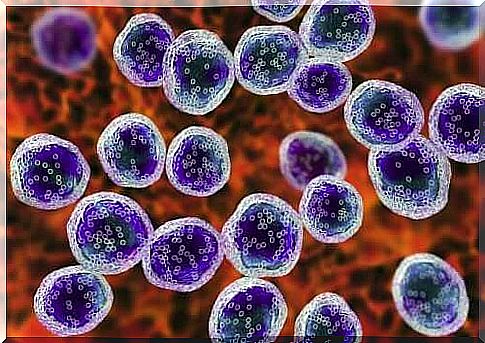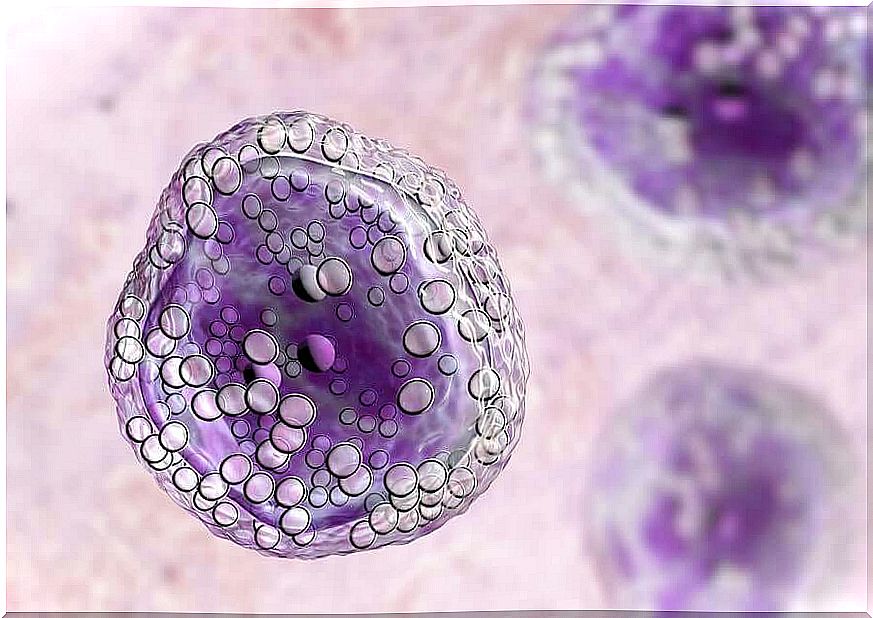Sézary Syndrome: Causes And Treatments

Sézary syndrome is an aggressive form of cutaneous T-cell lymphoma. A lymphoma is a malignant tumor of the body’s immune cells, especially those clustered in the lymph nodes.
We refer to white blood cells, which can be of different types. Among these we find the lymphocytes that divide into B and T. In the case of Sézary syndrome, the skin cells affected are the T lymphocytes.
This disease is very rare, in fact it is estimated that in the world a new case appears every year for every ten million inhabitants. It is more common in men, especially after the age of fifty.
Prognosis and causes of Sézary syndrome
The course of Sézary syndrome is rapid. A number of studies conducted to calculate patients’ survival expectancy indicate that the vast majority recover if the disease is detected early on. Only 40% survive in the five years after a more advanced diagnosis.
It is clear that early diagnosis is essential to ensure patient survival. In the event that the disease has already affected other organs besides the skin, the prognosis is only eight months.
The cause of this lymphoma is not known with certainty. Scientists suspect it is due to some genetic mutations, but we do not yet have definitive findings on this. It could also be due to viruses such as HTLV-1, cytomegalovirus and Epstein Barr virus. An infection caused by these microorganisms could be the triggering cause of the cancer.
Symptoms and Diagnosis of Sézary Syndrome
Sézary syndrome is very difficult to diagnose. It can start as a common-looking skin disorder, such as a mycosis. Because of this, doctors often confuse it and the correct diagnosis is late in coming.
Only when the disease progresses does the characteristic sign appear, namely erythroderma. The skin turns deep red in large areas of the body. Erythroderma is accompanied by itching which can be unbearable. Other symptoms are:
- Alopecia: hair loss.
- Ectropion – the eyelids fold in on themselves.
- Onychodystrophy: changes in the nails, from shape to size and color.
- Lymphadenopathy: lymphatic vessels and swollen lymph nodes.
- Hepatomegaly: enlargement of the liver.
- Splenomegaly: enlargement of the spleen.

Diagnosis
If you suspect Sézary syndrome, your doctor will most likely perform:
- Physical examination: search for the complete extension of skin lesions and identification of the presence of possible enlarged lymph nodes.
- Hemogram: is a simple laboratory test to analyze white blood cells, i.e. number, distribution and shape.
- Skin biopsy: A sample of the affected skin area is taken. A pathologist will examine it in the laboratory and report the results. The biopsy will be decisive for the diagnosis because it will establish the exact condition.
- Images: If the diagnosis of Sézary syndrome is confirmed, tomography and MRI scans will be needed to know the extent of the disease.
The Sézary cells
This syndrome is named after one of the two scientists who discovered it. Sézary and Bouvrain first described the disease in 1938. They associated it with the appearance of some very strange cells discovered by examining patients’ blood under a microscope.
These strange cells, known today as Sézary cells, are deformed T lymphocytes. They can be small, large and very large. Some studies have shown that the very large cell variant results in a worse prognosis.
These cells are not only present in Sézary syndrome. Their presence has in fact also been found in other diseases. Following this, it was determined that more than a thousand deformed T cells must be detected during the laboratory examination in order to diagnose the lymphoma in question.

Treatment of Sézary’s syndrome
The main treatment for Sézary syndrome is photopheresis, a procedure whereby blood is removed from the body, treated with ultraviolet light, and fed back into the body. It is a treatment well tolerated by the patient, who if he responds correctly has a life expectancy of about eight years.
If photopheresis doesn’t work, we switch to chemotherapy with drugs such as doxorubicin or gemcitabine. If favorable results are not obtained, radiotherapy and stem cell transplantation may be considered.
Some individuals have a worse prognosis than others. These are patients who:
- I am in a very advanced stage of the disease
- They are over sixty years old
- They have very large Sézary cells in their blood
Due to the difficult diagnosis, it is important to seek medical attention in case of skin disorders. If after the treatment indicated by the doctor the clinical picture does not improve, a new consultation should be requested. It is preferable to carry out additional examinations and clarify any doubts.









